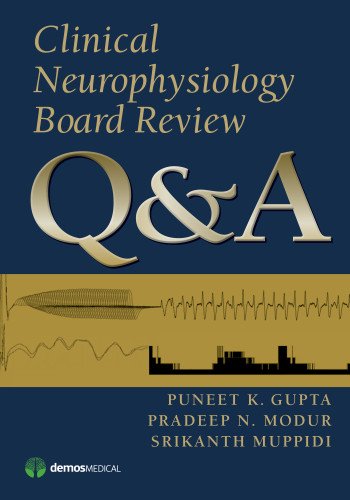

Most ebook files are in PDF format, so you can easily read them using various software such as Foxit Reader or directly on the Google Chrome browser.
Some ebook files are released by publishers in other formats such as .awz, .mobi, .epub, .fb2, etc. You may need to install specific software to read these formats on mobile/PC, such as Calibre.
Please read the tutorial at this link. https://ebooknice.com/page/post?id=faq
We offer FREE conversion to the popular formats you request; however, this may take some time. Therefore, right after payment, please email us, and we will try to provide the service as quickly as possible.
For some exceptional file formats or broken links (if any), please refrain from opening any disputes. Instead, email us first, and we will try to assist within a maximum of 6 hours.
EbookNice Team

Status:
Available4.7
27 reviewsThis high yield, illustrated clinical neurophysiology board review is a comprehensive resource for assessing and refining the knowledge tested on multiple board examinations. Written by authors who are collectively board certified in all of the areas covered, the book is a valuable study tool for candidates preparing for certification or recertification in neurology, clinical neurophysiology, neuromuscular medicine, sleep, and epilepsy. Using structured question formats typically encountered on boards, this comprehensive review allows users to assess knowledge in a wide range of topics and provides rationales for correct answers and explains why the other choices are incorrect. A unique "Pearls" section at the end of the book allows for quick review of the most important concepts prior to exam day.
Clinical Neurophysiology Board Review Q&A contains 801 questions with answers and detailed explanations. The book is divided into eight sections covering anatomy and physiology, electronics and instrumentation, nerve conduction studies and EMG, EEG, evoked potentials and intraoperative monitoring, sleep studies, ethics and safety, and advanced topics including QEEG, MEG, TES, autonomic testing and more. Liberal use of image-based questions illustrating the full spectrum of neurophysiologic tests and findings build interpretive skills. Questions are randomized and include both case-related questions in series and stand-alone items to familiarize candidates with the question types and formats they will encounter on the exam.
Key Features: